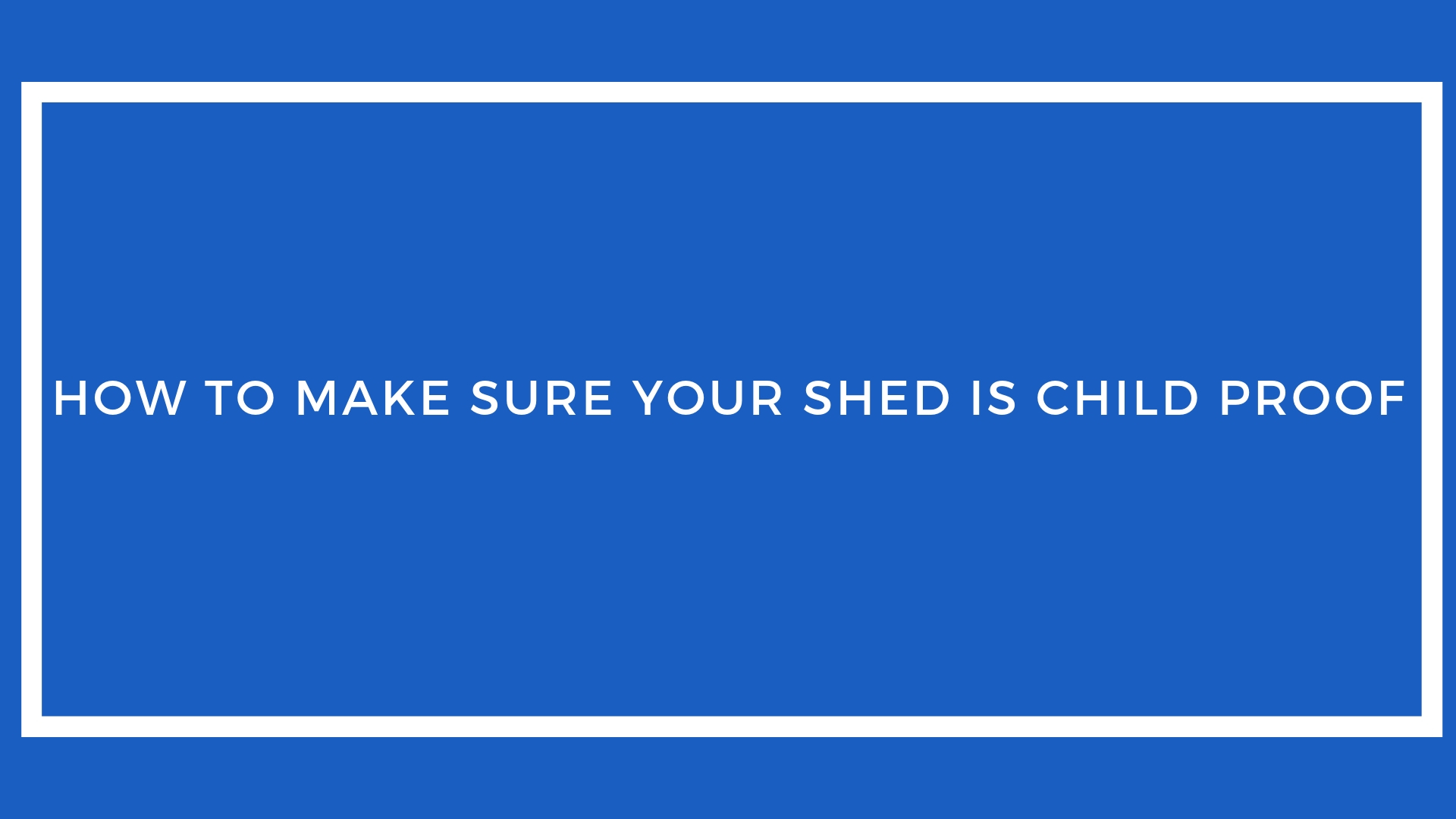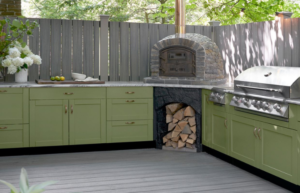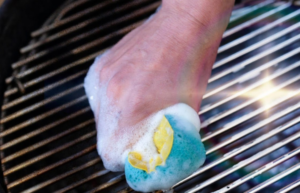How to Make Sure Your Shed is Child Proof

Typically, your shed should be in your back yard where you probably use it to house your tools and other projects. These tools may include objects that are dangerous if not used properly such as saws or nails and other electrical tools that may injure someone such as lawn mowers or power drills.But, as you can imagine, your children may become indifferent (or may even be ignorant) to these dangers as they see you use the tools to work on your garden (where obviously no accidents happen) week in week out with no consequence. In a child’s mind hence, the shed may be seen as fort to be protected from invading forces, a good place to hide in a game of hide and seek, or the final boss level for their arch – nemesis, Doctor Sheddo. Children have a wild imagination and for the sake of their safety it would be best for you to have precautions in place to avoid having your children injuring themselves.
Here are a few choice tips for avoiding such incidents
Keep your shed locked
This should be the first line of thought when it comes to securing your shed. Sheds often come with either, double doors or single doors, and either sliding doors or hinged doors. This implies there are four variations: a single sliding door, double sliding doors, single hinged doors and double hinged doors. Functionally, sliding doors may be easier to infiltrate so one should be careful to make sure they keep their doors locked. In case you may have weal doors then you may want to install a bolt and/or a padlock to keep your shed locked. This also implies that shed keys should be kept in a secure place away from the reach of your children.
Check your shed’s structural integrity
This boils down to checking for any cracks or holes in your shed’s boarding (assuming it is a wooden shed) that may be big enough (or may grow to become big enough) for your children to squeeze through and gain access to the shed.
Proper storage of tools
The first precaution is to ensure your tools are always in their designated spot after use. Do not leave a tool lying around the garden or just leaning on the shed. Your child may pick it and use it on their treasure hunt. This also implies smart storage of your tools. For example, you may want to have the sharper and more dangerous tools stored higher than the other tools. This means that your saws may be stored higher than your pliers.
Furthermore, hazardous and flammable materials must be kept in a locked cabinet. They obviously pose a far more immediate and greater danger to your children (if consumed or somehow manage to catch fire) and thus an additional layer of caution is necessary to keep your child safe.
Proper treatment of power tools
This involves unplugging all power tools when they are not in use. A second precaution is removing batteries for battery – powered tools when they are not in use. This may seem as more of a chore and one could argue that it does very little but the aim is to take as many precautions as possible to avoid accidents.
Keep your shed closed
This differs from the first point in that you should keep your garden shed closed when you are working in the garden (or in your shed in the case of a work shed). This is because it is quite easy for your children to enter your shed unnoticed and pick something that interests them and go play with it. Again, this may seem like it does very little especially if you are in the vicinity of your shed but you may become engrossed in your work and fail to notice your children.
Talk to your children
Finally, it is important for you to sit down with your children and have the discussion with them regarding the shed. Explain to them about the dangers of playing inside the shed or with the tools within it and establish clear boundaries of what they can and what they can’t do. Establish the consequences of breaching these boundaries and ensure to enforce these consequences in case of non – compliance.
Read Also:
- Sheds are Cheaper And Easier to Install than You Think
- Why a New Shed is an Awesome Christmas Gift for Your Husband?
<script type=”application/ld+json”>
{
“@context”:”http://schema.org”,
“@type”:”Article”,
“author”:{“@type”:”Person”,
“name”:”Bayazid Bostami”},
“dateModified”:”2019-01-22T20:58:00+10:00″,
“datePublished”:”2019-01-11T00:51:00+10:00″,
“description”:”Typically, your shed should be in your back yard where you probably use it to house your tools and other projects. These tools may include objects that are dangerous if not used properly such as saws or nails and other electrical tools that may injure someone such as lawn mowers or power drills.But, as you can imagine, your children may become indifferent (or may even be ignorant) to these dangers as they see you use the tools to work on your garden (where obviously no accidents happen) week in week out with no consequence.”,
“headline”:”How to Make Sure Your Shed is Child Proof”,
“image”:{“@type”:”ImageObject”,
“height”:1080,
“url”:”https://expertzine.com.au/wp-content/uploads/2019/01/Be-free-and-live-life-fully.2.jpg”,
“width”:1920},
“keywords”:”Child Proof Shed”,
“mainEntityOfPage”:{“@id”:”https://expertzine.com.au/how-to-make-sure-your-shed-is-child-proof/”,
“@type”:”WebPage”},
“publisher”:{“@type”:”Organization”,
“logo”:{“@type”:”ImageObject”,
“height”:”512″,
“url”:”https://expertzine.com.au/wp-content/uploads/2017/02/cropped-Zine.jpg”,
“width”:”512″},
“name”:”Expertzine”},
“isAccessibleForFree”:true,
“hasPart”:{“@type”:”WebPageElement”,
“isAccessibleForFree”:true}
}
</script>




